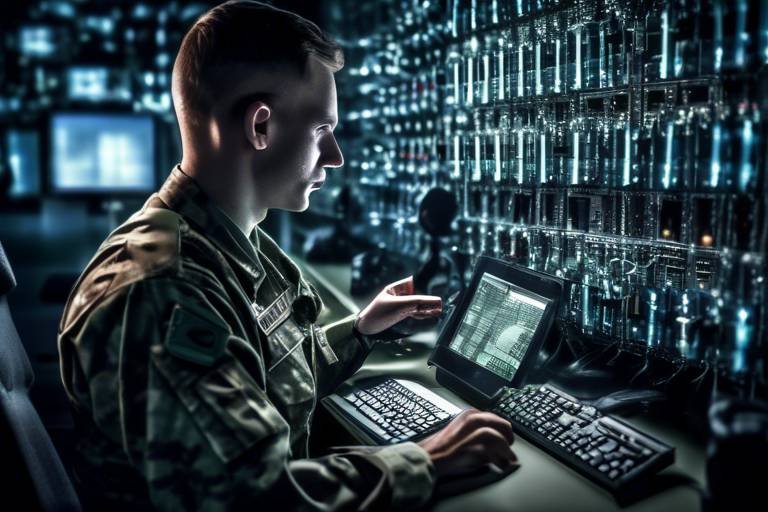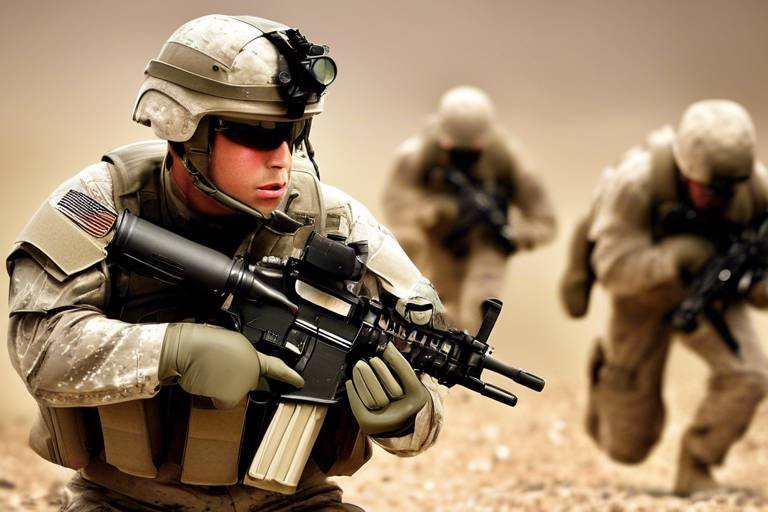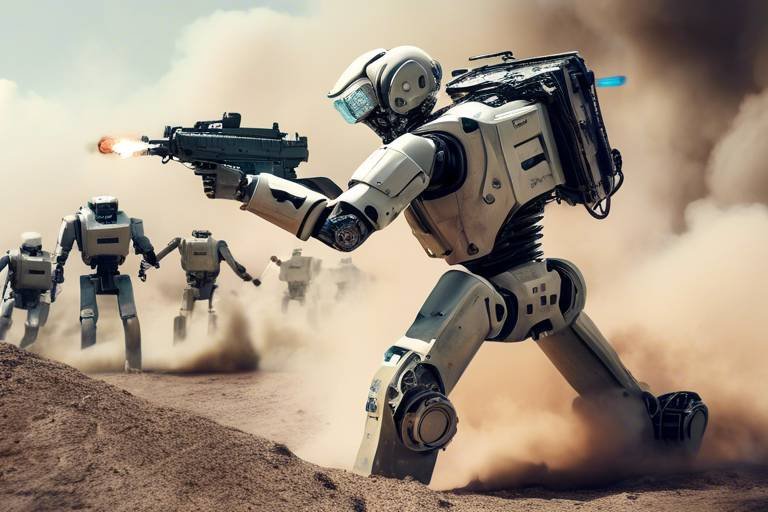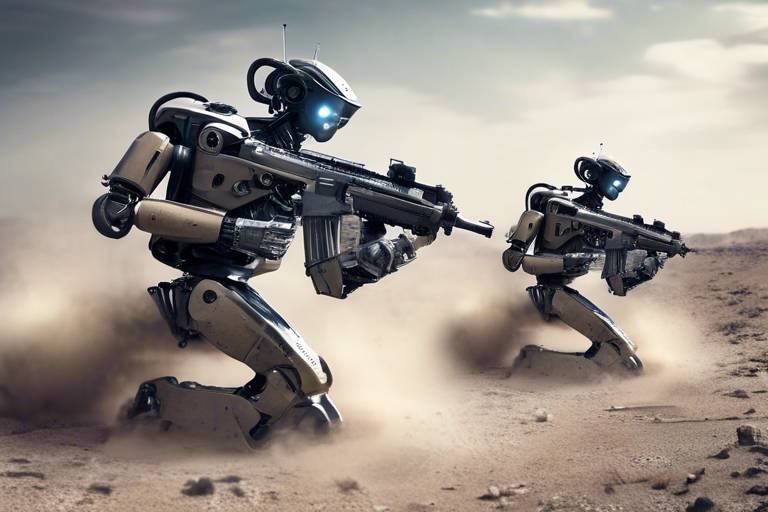The Role of Advanced Robotics in Modern Warfare
In the ever-evolving landscape of warfare, advanced robotics are emerging as game-changers, revolutionizing military operations and strategies. These technological marvels are not just tools; they are reshaping the very fabric of how conflicts are fought. Imagine a battlefield where machines can scout enemy positions, deliver supplies, or even engage in combat—all without putting human lives at risk. This is not a scene from a science fiction movie; it’s the reality of modern warfare, where robotics play a pivotal role.
The integration of robotics into military operations enhances capabilities in ways previously thought impossible. From unmanned aerial vehicles (UAVs) soaring high in the sky to ground robots navigating treacherous terrains, these machines are designed to perform tasks that minimize human risk while maximizing efficiency. As nations around the globe invest heavily in these technologies, the implications for future conflicts are profound. Are we ready for a world where robots make life-and-death decisions on the battlefield?
As we delve deeper into this fascinating topic, we’ll explore the evolution of military robotics, the various types of robots utilized in modern warfare, and the ethical considerations that arise from their use. The future of warfare is here, and it is robotic. Prepare to be amazed by the capabilities of these machines and the challenges they bring to the forefront of military ethics.
The journey of military robotics has been nothing short of remarkable. It began with basic mechanical devices, often clunky and limited in function, and has evolved into sophisticated autonomous systems capable of executing complex tasks in hostile environments. This evolution can be traced back to the early days of military innovation, where the need for efficiency and safety led to the development of various robotic technologies. Today, we see robots equipped with artificial intelligence (AI) that can analyze data, make decisions, and even learn from their experiences.
Consider the timeline of military robotics:
| Year | Milestone |
|---|---|
| 1960s | Introduction of remote-controlled vehicles for reconnaissance. |
| 1990s | Deployment of UAVs for surveillance during conflicts. |
| 2000s | Advancements in AI lead to autonomous drones and ground robots. |
| 2020s | Integration of AI-driven decision-making in combat scenarios. |
Modern warfare employs a diverse array of military robots, each serving unique roles that enhance operational capabilities. These include:
- Unmanned Aerial Vehicles (UAVs)
- Ground Robotics
- Underwater Drones
Each type of robot plays a crucial part in reconnaissance, logistics, and combat operations, transforming how military forces approach various challenges on the battlefield.
UAVs are at the forefront of modern military technology, playing a crucial role in surveillance and targeted strikes. These flying robots provide real-time intelligence that is invaluable for military operations. With their ability to cover vast areas quickly, UAVs minimize the risks associated with human pilots while delivering precise data that can influence strategic decisions. Their versatility makes them indispensable in contemporary military strategies, allowing forces to adapt swiftly to changing battlefield conditions.
Combat drones are specifically designed for offensive operations. These machines allow military forces to engage targets from a safe distance, significantly reducing the risk of casualties. By leveraging advanced targeting systems and real-time data, combat drones enhance operational efficiency and effectiveness in combat scenarios.
On the other hand, reconnaissance drones specialize in intelligence gathering. They provide critical data on enemy movements and terrain, aiding in strategic planning and decision-making during missions. The information gathered by these drones can be the difference between success and failure in military operations.
Ground robotics encompass a range of technologies, including bomb disposal units and autonomous vehicles. These robots are essential for performing dangerous tasks in hostile environments, ensuring the safety of personnel while enhancing operational capabilities. By taking on the most perilous jobs, ground robots allow human soldiers to focus on strategic planning and execution, significantly improving overall mission success rates.
The integration of robotics in warfare raises significant ethical questions. As machines take on roles traditionally held by humans, issues of accountability in autonomous decision-making come to the forefront. Who is responsible when a robot makes a mistake? The potential for collateral damage also looms large, as does the moral implication of using machines in combat situations. These questions necessitate new frameworks for military ethics, challenging us to rethink our approach to warfare in an age dominated by technology.
Determining accountability in incidents involving autonomous weapons systems is complex. The blurring lines between human and machine responsibility demand a reevaluation of existing military ethics. As we navigate this new terrain, it’s essential to establish clear guidelines to ensure that the deployment of robotic technologies aligns with our moral and ethical standards.
The introduction of robotics in warfare is altering traditional combat dynamics. Tactics, strategies, and the overall nature of conflict are changing as nations adapt to these technological advancements on the battlefield. The question remains: how will these changes shape the future of warfare? As we look ahead, it is clear that the role of advanced robotics will only continue to grow, presenting both opportunities and challenges for military forces worldwide.
- What are the main advantages of using robots in warfare?
Robots enhance operational efficiency, reduce human risk, and provide real-time intelligence. - Are there ethical concerns regarding the use of autonomous weapons?
Yes, ethical concerns include accountability, potential collateral damage, and the moral implications of using machines in combat. - How do UAVs differ from ground robots?
UAVs are primarily used for aerial surveillance and strikes, while ground robots perform tasks like bomb disposal and logistics.

Evolution of Military Robotics
This article explores how advanced robotics are transforming modern warfare, enhancing military capabilities, and reshaping strategies. It delves into various applications, ethical considerations, and future implications of robotic technologies in combat scenarios.
The journey of military robotics is nothing short of fascinating. From the early days of rudimentary mechanical devices that barely functioned, we have witnessed a remarkable transformation into sophisticated autonomous systems capable of executing complex tasks in the most hostile environments. Imagine a time when the concept of robots in warfare was merely a figment of science fiction. Today, these machines are not just a reality; they are a critical component of modern military operations.
Initially, military robotics focused on simple tasks, such as remote-controlled vehicles for bomb disposal. These early robots were limited in functionality and required constant human oversight. However, as technology advanced, so did the capabilities of these machines. The introduction of artificial intelligence and machine learning has led to the development of robots that can operate independently, making real-time decisions based on their surroundings.
One of the most significant milestones in this evolution was the deployment of unmanned aerial vehicles (UAVs) during the late 20th century. These drones revolutionized aerial reconnaissance and targeted strikes, providing military forces with a strategic advantage. UAVs can gather and transmit crucial intelligence without putting human pilots in harm’s way, thus minimizing risk while maximizing operational efficiency.
The evolution of military robotics can be summarized in the following stages:
- Early Development: Basic remote-controlled devices used for surveillance and bomb disposal.
- Introduction of UAVs: Drones that enhanced reconnaissance and combat capabilities.
- Autonomous Systems: Robots capable of making decisions and performing missions with minimal human intervention.
- Integration of AI: Advanced algorithms that allow robots to learn from their experiences and adapt to changing combat scenarios.
As we look to the future, the potential for military robotics appears boundless. With advancements in technology, we can expect to see robots that are not only faster and more efficient but also capable of performing tasks that were once deemed impossible. Imagine a battlefield where robots work alongside human soldiers, enhancing their capabilities and ensuring their safety. This is not just a dream; it is becoming a reality.
However, this evolution is not without its challenges. As military robotics continue to advance, ethical considerations surrounding their use become increasingly important. Questions about accountability, decision-making, and the moral implications of using machines in combat situations must be addressed. The military must navigate these complex issues while embracing the benefits that advanced robotics can bring to modern warfare.
Various types of military robots are utilized in modern warfare, including unmanned aerial vehicles (UAVs), ground robots, and underwater drones, each serving unique roles in reconnaissance, logistics, and combat operations.
UAVs play a crucial role in surveillance and targeted strikes, providing real-time intelligence while minimizing risk to human pilots. Their versatility makes them indispensable in contemporary military strategies.
Combat drones are specifically designed for offensive operations, allowing military forces to engage targets from a distance, thus reducing the risk of casualties and enhancing operational efficiency.
Reconnaissance drones specialize in intelligence gathering, providing critical data on enemy movements and terrain, which aids in strategic planning and decision-making during missions.
Ground robotics, including bomb disposal units and autonomous vehicles, are essential for performing dangerous tasks in hostile environments, ensuring the safety of personnel while enhancing operational capabilities.
The integration of robotics in warfare raises significant ethical questions, such as accountability in autonomous decision-making, the potential for collateral damage, and the moral implications of using machines in combat situations.
Determining accountability in incidents involving autonomous weapons systems is complex, as it blurs the lines between human and machine responsibility, necessitating new frameworks for military ethics.
The introduction of robotics in warfare alters traditional combat dynamics, influencing tactics, strategies, and the overall nature of conflict, as nations adapt to technological advancements on the battlefield.
Q: What are military robots used for?
A: Military robots are used for various purposes, including reconnaissance, logistics, bomb disposal, and combat operations.
Q: How do UAVs enhance military operations?
A: UAVs provide real-time intelligence, conduct surveillance, and can carry out targeted strikes, all while minimizing risk to human pilots.
Q: What ethical concerns arise with the use of military robotics?
A: Ethical concerns include accountability for autonomous decision-making, potential collateral damage, and the moral implications of using machines in warfare.
Q: How has technology changed military robotics?
A: Advances in AI and machine learning have led to more sophisticated and autonomous robots that can make decisions and perform complex tasks without constant human oversight.

Types of Military Robots
The landscape of modern warfare has been dramatically reshaped by the introduction of various types of military robots, each designed to fulfill specific roles that enhance operational effectiveness and safety. In this high-stakes environment, these advanced machines operate in ways that human soldiers cannot, often venturing into perilous situations while minimizing risk to personnel. From the skies to the ground and beneath the waves, military robotics is a multifaceted domain that includes unmanned aerial vehicles (UAVs), ground robots, and underwater drones, each contributing uniquely to military strategies.
Unmanned Aerial Vehicles, or UAVs, have revolutionized aerial combat and surveillance. These flying robots are equipped with advanced sensors and cameras, enabling them to gather real-time intelligence while remaining out of harm’s way. The ability to conduct operations without risking human life is a game-changer, allowing military planners to execute missions with unprecedented precision. UAVs can be categorized into two main types: combat drones and reconnaissance drones.
Combat drones are engineered for offensive operations, allowing military forces to engage targets from a safe distance. This capability significantly reduces the risk of casualties among troops, enhancing operational efficiency. For instance, a combat drone can strike high-value targets with pinpoint accuracy, often leading to successful missions without direct confrontation. On the other hand, reconnaissance drones specialize in gathering intelligence. They fly over enemy territory, collecting critical data on troop movements, terrain, and logistical setups. This information is vital for strategic planning, providing commanders with the insights necessary to make informed decisions.
Ground robots, such as bomb disposal units and autonomous vehicles, play an essential role in ensuring the safety of military personnel. These robots are designed to perform dangerous tasks, such as neutralizing explosives or transporting supplies in hostile environments. By taking on these high-risk operations, ground robots not only protect human lives but also enhance the overall operational capabilities of military units. For example, a bomb disposal robot can be deployed to investigate suspicious packages, allowing trained personnel to remain at a safe distance while the robot handles the threat.
Underwater drones, often referred to as unmanned underwater vehicles (UUVs), are another critical component of military robotics. These machines are tasked with various operations, including reconnaissance missions, mine detection, and even recovery of materials from the ocean floor. Their stealthy nature allows them to operate undetected, gathering intelligence that can prove invaluable in naval warfare. The integration of UUVs into military strategies provides a strategic advantage, as they can explore areas that are otherwise inaccessible to human divers.
In summary, the types of military robots employed in modern warfare are diverse and specialized, each serving a crucial function that enhances military effectiveness. As technology continues to advance, we can expect even more innovative applications of robotics in combat scenarios, fundamentally changing how wars are fought and won.
- What are the primary types of military robots?
The primary types of military robots include unmanned aerial vehicles (UAVs), ground robots, and underwater drones, each designed for specific tasks in warfare. - How do UAVs enhance military operations?
UAVs enhance military operations by providing real-time intelligence, conducting surveillance, and allowing for targeted strikes without risking human lives. - What is the role of ground robots in warfare?
Ground robots perform dangerous tasks such as bomb disposal and logistics, ensuring the safety of personnel while increasing operational capabilities. - What are underwater drones used for?
Underwater drones are used for reconnaissance, mine detection, and recovery operations, providing strategic advantages in naval combat.

Unmanned Aerial Vehicles (UAVs)
Unmanned Aerial Vehicles, commonly known as UAVs or drones, have revolutionized the landscape of modern warfare. These remarkable machines are not just flying robots; they are the eyes and ears of military operations, providing a level of situational awareness that was unimaginable just a few decades ago. Imagine having a bird's-eye view of a battlefield without risking a single human life. That's the power of UAVs! They can soar high above enemy lines, capturing real-time intelligence and delivering it back to commanders on the ground, all while keeping their operators safely out of harm's way.
One of the most significant advantages of UAVs is their versatility. They can be equipped with various payloads, including high-resolution cameras, sensors, and even weapons systems, allowing them to perform a multitude of roles. For instance, some UAVs are designed specifically for reconnaissance missions, while others are armed for combat operations. This adaptability makes them indispensable in contemporary military strategies. In fact, the use of UAVs has become so prevalent that they are now considered a standard component of military arsenals around the globe.
The operational capabilities of UAVs can be categorized into several key functions:
- Surveillance and Reconnaissance: UAVs can gather intelligence over vast areas, tracking troop movements and identifying enemy positions without putting pilots at risk.
- Targeted Strikes: Armed drones can engage targets with precision, minimizing collateral damage and reducing the risk of civilian casualties.
- Logistics Support: Some UAVs are even being utilized for logistical purposes, delivering supplies and equipment to troops in the field where traditional transport might be too dangerous.
The evolution of UAV technology has led to the development of various types of drones, each tailored to specific missions. For example, combat drones like the MQ-9 Reaper are designed for offensive operations, allowing military forces to strike at targets from a safe distance. On the other hand, reconnaissance drones such as the RQ-4 Global Hawk are equipped for intelligence gathering, providing critical data on enemy movements and terrain. This distinction is crucial as it allows military planners to deploy the right type of UAV for each mission, maximizing effectiveness and minimizing risks.
Moreover, UAVs are equipped with advanced technologies, such as artificial intelligence and machine learning, enabling them to operate autonomously in certain situations. This capability not only enhances their efficiency but also allows them to adapt to changing environments on the battlefield. However, this raises important questions about the future of warfare and the role of human operators in decision-making processes. As we integrate more autonomous systems into military operations, we must consider the implications of machines making life-and-death decisions.
In conclusion, UAVs are transforming the way wars are fought. They provide a strategic advantage that is hard to overlook, offering real-time intelligence and precision strikes while keeping personnel safe. As technology continues to advance, we can expect UAVs to play an even more significant role in shaping the future of military operations. The question remains: how will we balance the benefits of these incredible machines with the ethical considerations they bring?
- What are UAVs used for in modern warfare? UAVs are primarily used for surveillance, reconnaissance, and targeted strikes, providing military forces with critical intelligence while minimizing risk to human pilots.
- How do UAVs enhance military strategies? By providing real-time data and the ability to engage targets from a distance, UAVs allow military planners to make informed decisions quickly, improving overall operational efficiency.
- What are the ethical concerns surrounding the use of UAVs? Ethical concerns include accountability for autonomous decision-making, potential collateral damage, and the implications of using machines to engage in combat.
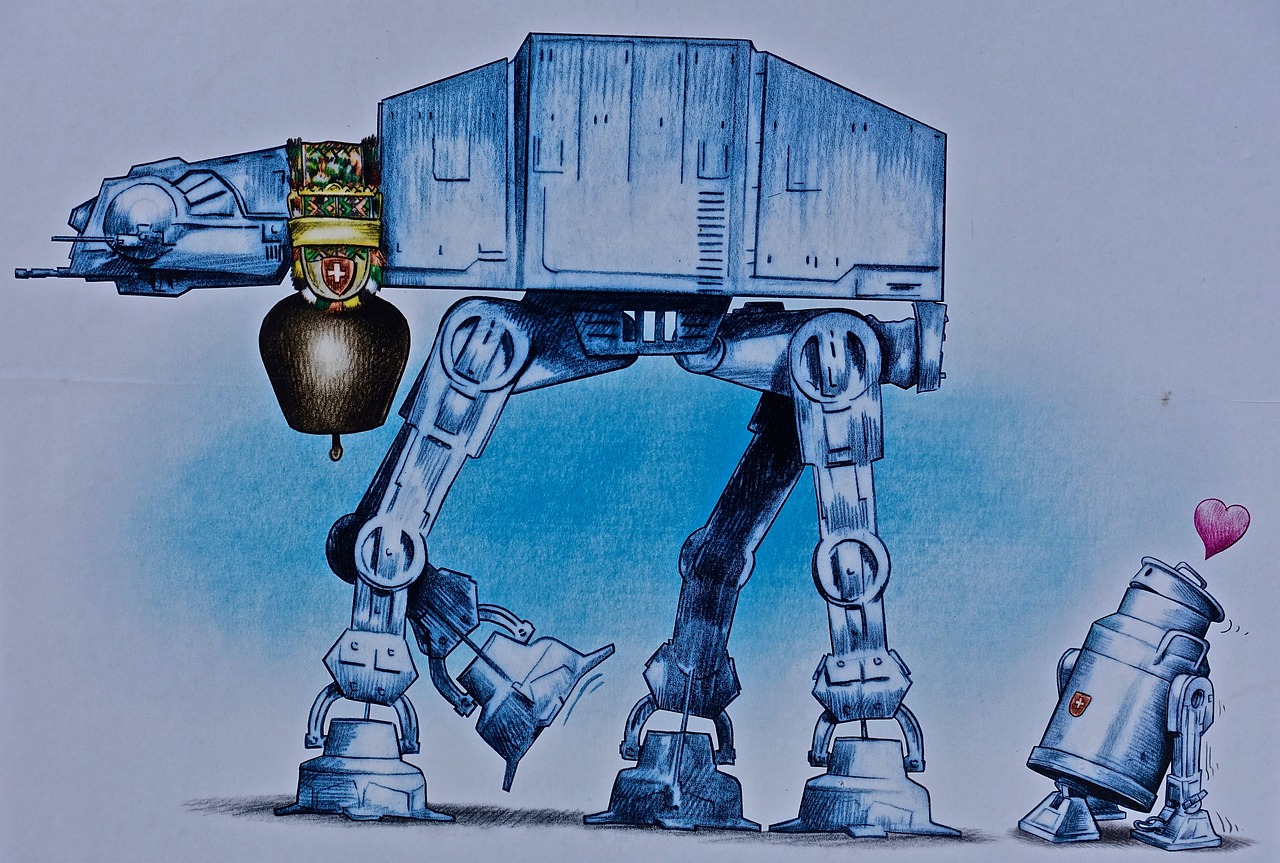
Combat Drones
Combat drones have revolutionized the way military forces engage in warfare, offering a unique blend of precision and safety. These unmanned aerial vehicles (UAVs) are specifically designed for offensive operations, allowing military personnel to strike targets from a distance without putting human pilots in harm's way. Imagine being able to conduct a surgical strike on a high-value target while safely stationed thousands of miles away—this is the power that combat drones bring to modern warfare.
One of the most significant advantages of combat drones is their ability to operate in high-risk environments where traditional aircraft might face severe threats. For instance, during conflicts where anti-aircraft systems are prevalent, deploying a drone can minimize the risk of losing valuable human life and expensive equipment. Instead of sending in a manned fighter jet, military strategists can opt for a drone, which can be equipped with advanced surveillance technology and weaponry.
Furthermore, the real-time data transmission capabilities of combat drones allow for dynamic decision-making during operations. They can relay critical information back to command centers, enabling military leaders to adjust their strategies on the fly. This capability is akin to having a bird's-eye view of the battlefield, providing insights that can turn the tide of a conflict.
Combat drones are equipped with various weapon systems, including missiles and precision-guided munitions, which enhance their effectiveness in targeted strikes. The integration of advanced targeting systems ensures that these drones can strike with pinpoint accuracy, significantly reducing the chances of collateral damage. However, this precision also raises ethical questions about the implications of remote warfare. The ability to engage targets without direct human involvement can desensitize operators and blur the lines of accountability.
To illustrate the capabilities and impact of combat drones, consider the following table that highlights their key features:
| Feature | Description |
|---|---|
| Range | Combat drones can operate at significant distances, often exceeding 1,000 miles. |
| Endurance | Many drones can stay airborne for over 24 hours, allowing for prolonged missions. |
| Payload Capacity | Combat drones can carry a variety of weapons, including missiles and bombs. |
| Surveillance | Equipped with advanced sensors and cameras, they provide real-time intelligence. |
In conclusion, combat drones are a game-changer in military operations, offering unparalleled advantages in terms of safety, precision, and intelligence gathering. However, as their use becomes more widespread, it is crucial to address the ethical implications and establish clear guidelines for their deployment. The future of warfare is undoubtedly intertwined with these advanced technologies, and understanding their impact will be essential for military leaders and policymakers alike.
- What are combat drones? Combat drones are unmanned aerial vehicles designed for offensive military operations, allowing for strikes without risking human pilots.
- How do combat drones enhance military operations? They provide real-time intelligence, operate in high-risk environments, and offer precision strikes, reducing collateral damage.
- What ethical concerns are associated with combat drones? The use of combat drones raises questions about accountability, potential desensitization of operators, and the moral implications of remote warfare.
- Are combat drones effective in modern warfare? Yes, they have proven to be effective by enhancing operational capabilities and allowing for safer engagement in conflict zones.

Reconnaissance Drones
Reconnaissance drones, often referred to as eyes in the sky, have revolutionized the way military forces gather intelligence on the battlefield. These unmanned aerial vehicles (UAVs) are equipped with advanced sensors and imaging technologies, allowing them to capture high-resolution images and real-time video feeds from vast distances. Imagine having a bird's-eye view of enemy positions without putting a single soldier at risk—this is the transformative power of reconnaissance drones.
One of the most significant advantages of reconnaissance drones is their ability to conduct surveillance over hostile territories without being detected. They can operate at various altitudes and are often equipped with stealth technology, making them difficult to spot and intercept. This capability enables military strategists to gather critical information on enemy movements, troop deployments, and even the geography of the battlefield, all of which are essential for informed decision-making.
Furthermore, reconnaissance drones can be deployed in various scenarios, ranging from long-range surveillance to real-time battlefield reconnaissance. Their versatility allows military forces to adapt to changing conditions on the ground. For instance, during a military operation, commanders can deploy these drones to monitor the situation continuously, adjusting their tactics based on the intelligence gathered. This not only enhances operational effectiveness but also minimizes the risk of surprise attacks.
In addition to their surveillance capabilities, reconnaissance drones are equipped with cutting-edge technologies that enable them to perform a range of functions, including:
- Signal Intelligence (SIGINT): Collecting electronic signals that provide insights into enemy communications.
- Imagery Intelligence (IMINT): Capturing detailed images that help in assessing enemy capabilities and infrastructure.
- Environmental Monitoring: Assessing weather conditions and terrain features that could impact military operations.
The data collected by reconnaissance drones is invaluable. It can be analyzed in real-time, allowing military leaders to make swift decisions that can alter the course of an operation. Moreover, the integration of artificial intelligence (AI) in these drones enhances their functionality, enabling them to identify patterns and anomalies in the data, further aiding in strategic planning.
However, as with any technology, there are challenges and considerations. The reliance on drones for reconnaissance raises questions about privacy and data security, especially when operating near civilian areas. The potential for misuse of the data collected is a pressing concern that military and political leaders must address to ensure ethical use of reconnaissance capabilities.
In conclusion, reconnaissance drones are a game-changer in modern warfare. They not only provide a tactical advantage by delivering critical intelligence but also redefine the very nature of military operations. As technology continues to evolve, these drones will likely become even more sophisticated, further solidifying their role as essential assets on the battlefield.
- What are reconnaissance drones used for? Reconnaissance drones are primarily used for intelligence gathering, surveillance, and reconnaissance missions. They provide real-time data about enemy movements and terrain.
- How do reconnaissance drones operate? These drones operate using advanced sensors and imaging technologies, allowing them to capture high-resolution images and video feeds while remaining undetected.
- What are the ethical concerns surrounding reconnaissance drones? Ethical concerns include privacy issues, potential misuse of collected data, and the implications of surveillance on civilian populations.
- Will reconnaissance drones become more advanced in the future? Yes, as technology continues to progress, reconnaissance drones are expected to become more sophisticated, incorporating artificial intelligence and enhanced stealth capabilities.
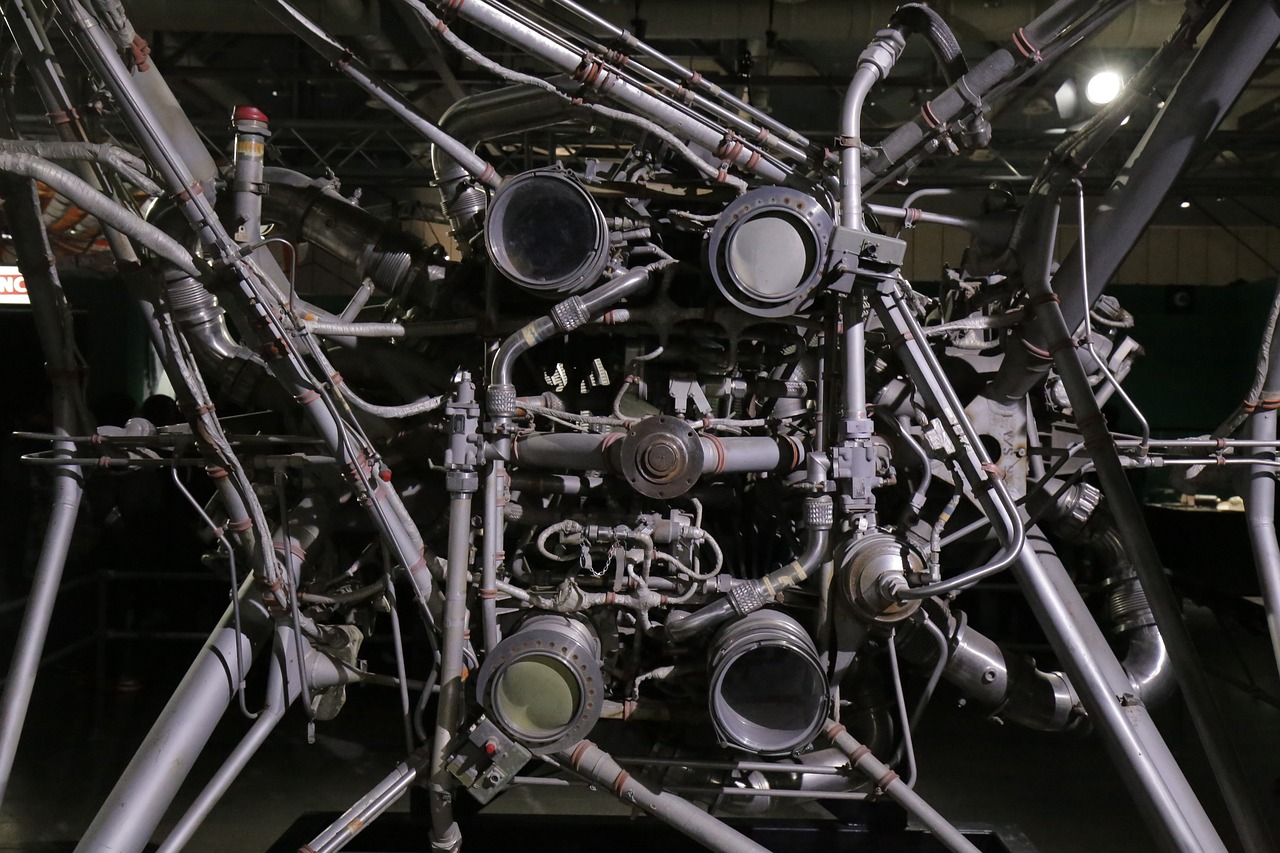
Ground Robotics
Ground robotics have become a pivotal component of modern military operations, evolving from rudimentary machines into advanced systems capable of performing a variety of critical tasks on the battlefield. These ground robots are designed to operate in some of the most dangerous environments, ensuring the safety of human personnel while enhancing overall operational efficiency. Picture a battlefield where soldiers can rely on robots to handle the most perilous tasks—this is not science fiction; it’s the reality of contemporary warfare.
Among the most notable types of ground robotics are bomb disposal units and autonomous vehicles. Bomb disposal robots, for instance, are equipped with specialized tools and cameras that allow them to safely investigate and neutralize explosives without putting human lives at risk. This capability is crucial, as the mere presence of an explosive device can halt military operations and endanger lives. By deploying these robots, military forces can maintain momentum and ensure that threats are efficiently dealt with.
Autonomous vehicles, on the other hand, serve a multitude of roles, from transporting supplies to reconnaissance missions. Imagine a convoy of supplies being delivered to troops on the front lines without any human drivers; that’s the power of ground robotics. These vehicles can navigate challenging terrains, adapt to changing environments, and even communicate with other units to optimize logistics. This level of automation not only speeds up operations but also reduces the risk of ambushes and other dangers that human drivers might face.
Moreover, ground robotics also play a significant role in surveillance and reconnaissance. Equipped with advanced sensors and imaging technology, these robots can gather real-time intelligence on enemy positions and movements. This information is invaluable for commanders who need to make quick and informed decisions in the heat of battle. The ability to monitor enemy activities without exposing soldiers to danger changes the game entirely, allowing for more strategic planning and execution of military operations.
However, the integration of ground robotics into military operations does not come without its challenges. There are ongoing discussions about the ethical implications of using robots in combat situations. For instance, while these machines can reduce human casualties, they also raise questions about accountability. If a robot makes a mistake, who is held responsible? This is a complex issue that military leaders and ethicists are grappling with as technology continues to advance.
In summary, ground robotics are reshaping the landscape of modern warfare. They enhance operational capabilities, protect human lives, and provide critical intelligence. As these technologies continue to evolve, we can expect to see even greater integration of robotics in military strategies. The future of warfare may very well depend on how effectively we can leverage these machines while addressing the ethical concerns they bring.
- What are the main types of ground robotics used in the military?
The main types include bomb disposal units, autonomous vehicles, and surveillance drones, each serving distinct roles in military operations.
- How do ground robots enhance safety for military personnel?
Ground robots can perform dangerous tasks, such as bomb disposal and reconnaissance, reducing the risk of casualties among soldiers.
- What are the ethical concerns associated with military robotics?
Ethical concerns include accountability for autonomous decision-making and the potential for collateral damage in combat scenarios.
- Are ground robots fully autonomous?
While many ground robots operate autonomously, they often require human oversight for critical decisions, especially in complex scenarios.

Ethical Considerations
The integration of robotics in warfare is not just a technological leap; it raises profound ethical questions that society must grapple with. As we embrace these advanced systems, we must ask ourselves: who is responsible when a machine makes a fatal mistake? The very essence of accountability becomes murky when autonomous systems are involved. Should the blame fall on the programmers, the military commanders, or the machines themselves? This ambiguity necessitates a reevaluation of our existing frameworks for military ethics.
Moreover, there's the troubling potential for collateral damage. While robots are designed to minimize risks to human soldiers, they are not infallible. The precision of a drone strike can be compromised by unforeseen variables, leading to unintended civilian casualties. This raises a moral dilemma: is it justifiable to use machines that might not fully understand the complexities of human life in high-stakes environments? The risk of dehumanizing warfare is a chilling prospect, as it may lead to a desensitized approach to conflict.
In addition to accountability and collateral damage, we must consider the psychological impact on soldiers. Imagine a scenario where a soldier controls a drone from thousands of miles away. While they may feel removed from the battlefield, the reality is that they are still making life-and-death decisions. The emotional burden of such choices can lead to mental health issues, creating a new type of warfare trauma.
To better understand the ethical landscape of military robotics, let’s break down some key considerations:
- Autonomous Decision-Making: As machines take on more decision-making roles, the question of human oversight becomes critical. Should there always be a human in the loop?
- Legal Implications: Current laws of war may not adequately address the capabilities of robotic systems, leading to potential legal gray areas.
- Moral Responsibility: Who is morally accountable for the actions of an autonomous weapon? This question remains largely unanswered.
As we explore these ethical considerations, it’s essential to engage in ongoing discussions that include not only military experts but also ethicists, technologists, and the broader public. The implications of robotic warfare extend beyond the battlefield; they touch on our collective humanity and the values we hold dear. As we advance, we must ensure that these technologies are developed and deployed responsibly, with a clear understanding of their potential consequences.
Q: What are the main ethical concerns regarding military robotics?
A: The primary concerns include accountability for autonomous decisions, the risk of collateral damage, and the psychological impact on operators.
Q: How do military robots affect the nature of warfare?
A: They change traditional combat dynamics by introducing new tactics and strategies, often reducing the need for human soldiers in dangerous situations.
Q: Is there a legal framework governing the use of military robots?
A: Current laws may not fully address the complexities of robotic warfare, creating potential legal gray areas that need to be explored.
Q: Can robots make ethical decisions in combat?
A: While robots can be programmed to follow rules of engagement, the question of whether they can truly make ethical decisions remains contentious.

Accountability and Responsibility
As we dive into the murky waters of modern warfare, one question looms large: who is responsible when autonomous weapons systems make decisions that lead to unintended consequences? The integration of advanced robotics into military operations presents a complex web of accountability that challenges traditional notions of responsibility. In the past, military actions were directly linked to human operators, but with the rise of autonomous systems, this connection becomes increasingly tenuous.
This shift raises significant ethical dilemmas. Imagine a scenario where a drone, equipped with artificial intelligence, identifies a target based on its programming. If that drone mistakenly strikes a civilian area, who bears the blame? Is it the programmer who wrote the code, the military leader who authorized the operation, or the machine itself? This ambiguity necessitates the development of new frameworks for military ethics that can adapt to the realities of robotic warfare.
Furthermore, the use of autonomous systems in combat blurs the lines of accountability, making it essential for military organizations to establish clear guidelines. These guidelines must address not only the technical aspects of robotic deployment but also the ethical implications of their use. For example, a comprehensive accountability framework could include:
- Pre-deployment Testing: Ensuring that autonomous systems are rigorously tested for reliability and ethical decision-making capabilities.
- Clear Command Structures: Defining who is in charge when a robot makes a critical decision on the battlefield.
- Post-incident Reviews: Conducting thorough investigations of incidents involving autonomous systems to determine accountability.
As nations invest heavily in robotic technologies, the implications of these ethical considerations extend beyond the battlefield. They influence international relations, as countries grapple with the potential for an arms race in autonomous weaponry. The question of accountability could become a pivotal issue in diplomatic discussions, shaping treaties and agreements regarding the use of robotics in warfare.
Moreover, the psychological impact on soldiers must not be overlooked. The detachment from direct combat could lead to a sense of disconnection from the consequences of warfare. This phenomenon raises another layer of ethical concern: how do we ensure that military personnel remain accountable for the actions carried out by machines in their stead? The challenge is to maintain a moral compass in a rapidly evolving technological landscape.
In conclusion, as we navigate the future of warfare, the conversation about accountability and responsibility must evolve alongside the technologies we deploy. It is crucial for military leaders, policymakers, and ethicists to collaborate in creating a robust framework that addresses these challenges head-on. Only then can we hope to harness the benefits of advanced robotics while minimizing the risks associated with their use in combat.
- What are the main ethical concerns regarding military robotics?
The primary concerns include accountability for decisions made by autonomous systems, the potential for collateral damage, and the moral implications of employing machines in warfare. - How can accountability be established in autonomous warfare?
Establishing accountability requires clear guidelines, rigorous testing, and defined command structures to ensure that responsibility is assigned appropriately. - What impact do military robots have on soldier morale?
The use of robots can create a sense of detachment from combat, potentially affecting soldiers' emotional responses and their sense of responsibility for warfare outcomes. - Are there international laws governing the use of military robotics?
Currently, there are limited international laws specifically addressing military robotics, but ongoing discussions aim to create frameworks for their ethical use.
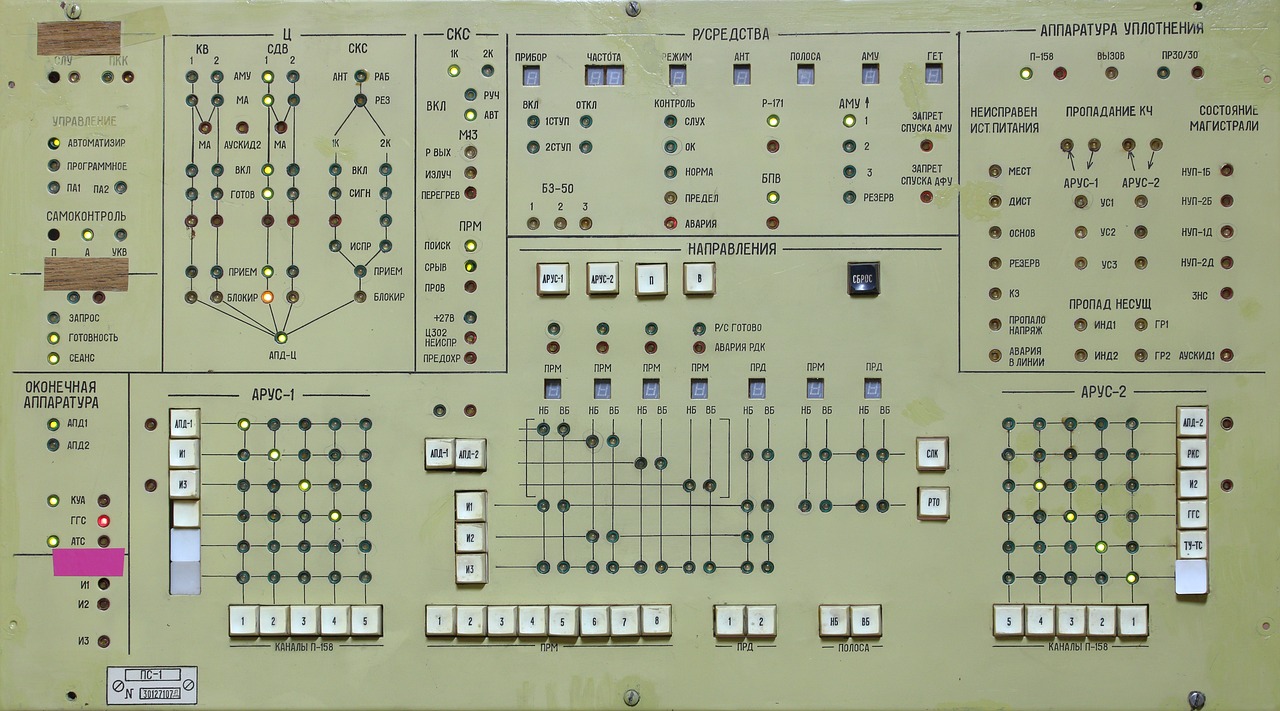
Impact on Warfare Dynamics
The introduction of advanced robotics into military operations has fundamentally altered the dynamics of warfare. No longer are battles fought solely on the ground or in the air; today, the battlefield is an intricate web of interconnected systems where machines and humans collaborate in ways previously thought impossible. This shift has not only changed how wars are fought but also how strategies are formulated and executed. For instance, the ability to deploy unmanned systems for reconnaissance and combat has allowed military planners to gather real-time intelligence without putting troops in harm's way. Imagine a chess game where one player has the ability to see the entire board while the other is limited to a few pieces; this is the advantage that robotics provides.
Furthermore, the use of autonomous drones and ground robots has led to the emergence of new tactics. Traditional warfare often relied on large troop movements and direct engagements. However, with the integration of robotics, forces can now conduct operations with a level of precision and stealth that was previously unimaginable. For example, a single drone can monitor a vast area, identify enemy positions, and even engage targets, all without the need for direct human oversight. This capability not only enhances operational efficiency but also minimizes the risk of casualties.
As nations race to develop and deploy these advanced technologies, the very nature of conflict is evolving. The asymmetrical warfare landscape is reshaped, where smaller, less-equipped forces can leverage advanced robotics to level the playing field against more powerful adversaries. This has led to a scenario where technological superiority is no longer the sole determinant of victory. Instead, it is the strategic application of these technologies that can turn the tide of battle.
However, this transformation is not without its challenges. The reliance on robotics introduces a new set of vulnerabilities. Cybersecurity becomes paramount, as adversaries may target the very systems that provide a tactical advantage. For instance, a well-coordinated cyberattack could disable a fleet of drones mid-mission, rendering them useless and exposing ground troops to danger. The potential for malfunctions or hacking raises questions about the reliability of these systems in critical situations.
Additionally, the impact on military personnel cannot be overlooked. As robots take on more roles in combat, the nature of military training is evolving. Soldiers are now required to understand and operate complex robotic systems, shifting the focus from traditional combat skills to technological proficiency. This change can lead to a disconnect between human soldiers and their robotic counterparts, raising concerns about teamwork and communication in high-stress environments.
In summary, the integration of advanced robotics into warfare has created a paradigm shift that influences not just tactics and strategies but also the very essence of military operations. As nations adapt to these changes, the future of warfare will likely be defined by those who can effectively harness the power of robotics while navigating the associated challenges. Will we see a future where machines lead the charge, or will human intuition and experience continue to play a crucial role? Only time will tell.
- How do military robots enhance operational efficiency?
Military robots can perform tasks such as surveillance, reconnaissance, and logistics without risking human lives, allowing for more efficient and safer operations. - What are the ethical concerns surrounding military robotics?
Key ethical concerns include accountability for autonomous decision-making, the potential for collateral damage, and the moral implications of using machines in combat. - How does robotics affect military training?
Military training is evolving to include proficiency in operating and maintaining robotic systems, shifting focus from traditional combat skills to technological expertise. - What are the vulnerabilities of using robotics in warfare?
Robotics can be vulnerable to cyberattacks and malfunctions, which can compromise missions and expose personnel to danger.
Frequently Asked Questions
- What are advanced robotics in modern warfare?
Advanced robotics in modern warfare refer to sophisticated machines and systems that can operate autonomously or semi-autonomously to perform a variety of military tasks. These include unmanned aerial vehicles (UAVs), ground robots, and underwater drones, all designed to enhance military capabilities and effectiveness on the battlefield.
- How have military robotics evolved over the years?
The evolution of military robotics has been remarkable, transitioning from basic mechanical devices to highly advanced autonomous systems. Initially, military robots were simple tools for specific tasks, but advancements in technology have led to the development of robots capable of complex operations, such as surveillance and combat, significantly changing the landscape of warfare.
- What types of military robots are commonly used today?
Today, various types of military robots are deployed, including:
- Unmanned Aerial Vehicles (UAVs): Used for surveillance and targeted strikes.
- Ground Robots: Employed for bomb disposal and logistics.
- Underwater Drones: Utilized for reconnaissance and mine detection.
- What is the role of combat drones?
Combat drones are specifically designed for offensive operations. They allow military forces to engage targets from a safe distance, minimizing the risk of casualties among personnel. Their ability to conduct precise strikes enhances operational efficiency and effectiveness in combat scenarios.
- Are there ethical concerns regarding the use of military robots?
Yes, the use of military robots raises significant ethical questions. Issues such as accountability in autonomous decision-making, potential collateral damage, and the moral implications of using machines in combat situations are critical considerations that need to be addressed as technology advances.
- How does robotics impact traditional warfare dynamics?
The integration of robotics into warfare dramatically alters traditional combat dynamics. It influences tactics, strategies, and the overall nature of conflict, as nations adapt to these technological advancements. This shift requires military leaders to rethink their approaches to warfare in light of new capabilities and challenges.





